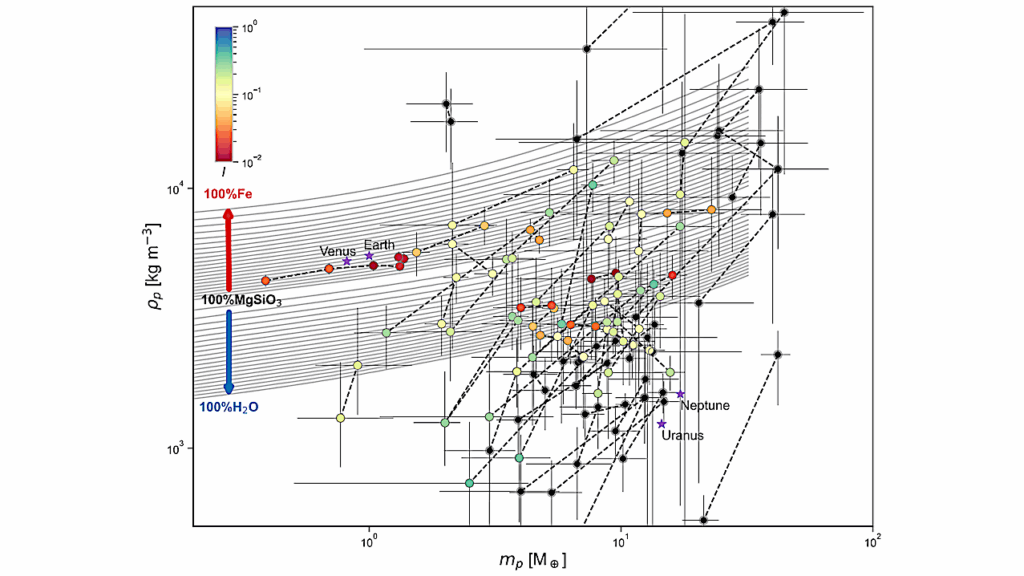Can A Multi-layer Planet Be Approximated As A Homogeneous Planet?

With the discovery of TRAPPIST-1 and its seven planets within 0.06 au, the correct treatment of tidal interactions is becoming necessary. The eccentricity, rotation, and obliquity of the planets of TRAPPIST-1 are indeed the result of tidal evolution over the lifetime of the system.
Tidal interactions can also lead to tidal heating in the interior of the planets, which can then be responsible for volcanism and/or surface deformation. In the majority of studies to estimate the rotation of close-in planets or their tidal heating, the planets are considered as homogeneous bodies and their rheology is often taken to be a Maxwell rheology.
We investigate here the impact of considering a multi-layer structure and an Andrade rheology on the way planets dissipate tidal energy as a function of the excitation frequency. We use an internal structure model, which provides the radial profile of structural and rheological quantities to compute the tidal response of multi-layer bodies. We then compare the outcome to the dissipation of a homogeneous planet.
We find that for purely rocky bodies, it is possible to approximate the response of a multi-layer planet by that of a homogeneous planet. However, using average profiles of shear modulus and viscosity to compute the homogeneous planet response leads to an overestimation of the averaged dissipation.
We provide fitted values of shear modulus and viscosity to be able to reproduce the response of various types of rocky planets. However, we find that if the planet has an icy layer, its tidal response can no longer be approximated by a homogeneous body because of the very different properties of the icy layers, which lead to a second dissipation peak at higher frequencies. We also compute the tidal heating profiles for the outer TRAPPIST-1 planets (e to h).
Solid tidal friction in multi-layer planets: Application to Earth, Venus, a Super Earth and the TRAPPIST-1 planets. Can a multi-layer planet be approximated as a homogeneous planet?
Emeline Bolmont, Sylvain N. Breton, Gabriel Tobie, Caroline Dumoulin, Stéphane Mathis, Olivier Grasset
Comments: Accepted in A&A. The abstract was modified to fit in
Subjects: Earth and Planetary Astrophysics (astro-ph.EP)
Cite as: arXiv:2010.04587 [astro-ph.EP] (or arXiv:2010.04587v1 [astro-ph.EP] for this version)
Submission history
From: Emeline Bolmont [view email]
[v1] Fri, 9 Oct 2020 14:13:36 UTC (973 KB)
https://arxiv.org/abs/2010.04587
Astrobiology, exoplanet,








